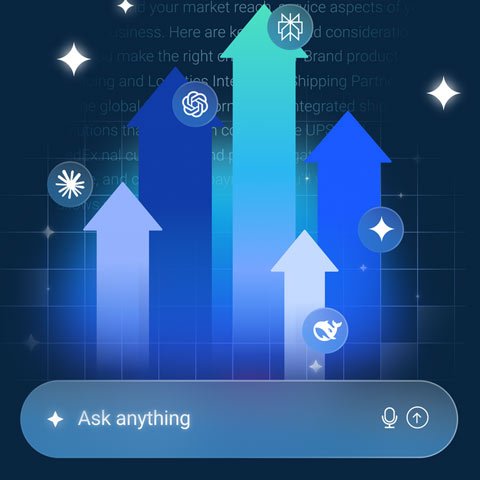5 Signs Your 'Content Strategy' Isn't a Strategy at All

As the inimitable Mark Ritson often points out; a marketing strategy is not a list of goals or aspirations, and it is definitely not a list of tactics. In a revealing column back in 2021, he wrote “My best estimate is that about 90% of marketers never develop a marketing strategy. Never enjoy a single strategic moment in their whole career.”
That lack of strategy cascades into all areas of marketing - and content is no exception. In a recent webinar ‘The State of Content Experiences: Trends, Technology and Tactics’, content experts Andrew Hall and Richard Marks discuss this - in this article, we’ve laid out some of the key points made around content strategy, particularly how you can identify a non-strategy - and what does a real content strategy look like anyway?
Signs of content non-strategy;
- No agreed strategy document
- Overreliance on content calendars (and blind commitment to delivering a certain volume of content)
- Notional aspiration to service a never-ending list of channels
- Tactical busy-work - spending all your time on systems and scheduling
- Spreading budget too thin across too many projects and channels
Sounding familiar? If you recognise any of these signs, it’s probably time to go back to the drawing board.
In content as in the rest of marketing, a strategy cannot be developed in isolation - you will need some research to inform your decisions - the gameplan goes like this;
🔍 Diagnose (Research)
↓
🧠 Develop a Strategy
↓
🚀 Execute (Tactics)
This article is certainly not a complete overview of modern marketing theory, but we will highlight some fundamentals to give you a start point.
Diagnosis
A real content strategy is built on data. One very common feature of a non-strategy? It relies on assumptions and feelings about what customers want. To build a plan that actually works, you've got to constantly repeat the marketing mantra: “I am not the customer.”
Understanding where your brand and content really are right now (and why) is the essential first step before you can figure out what to do next.
Here's some good news: if your organisation has a (real) marketing strategy, some of this research might have already been done - take it. Talk to the marketing, product, and sales teams to find any existing customer personas, market segmentation, or competitor analysis.
Even with a super-constrained budget, there’s no option to skip this step. You can conduct low-cost surveys, gather on-site feedback, or even chat with colleagues on the frontline. Talk to the sales team about the questions they get every day. Sit in on customer support calls. These data-points will help you uncover the perceptions, needs, and pain points of your audience.
Armed with this data, it's time for some thinking. Your diagnosis needs to answer three critical questions:
What Market Are You In?
A common mistake is to define your market too broadly. For example, are you competing in the vast, noisy "business software" market? Or are you in the specific "CRM" market? Or the even more specific "marketing automation for e-commerce" niche?
The answer dramatically changes who your true competitors are, what topics your audience actually cares about, and what content you’ll need.
Who is the Customer?
This question goes way beyond simple demographics. Your research needs to uncover your true customer segments. The key here isn't to identify what segments exist in the world, but to define the distinct groups who use, or could use, your brand.
What does each segment truly need? What specific problems are they trying to solve? How do they behave, when and where do they look for information? What a CXO needs from your content is likely very different from what a Marketing Manager needs, even if they work at the same company. A strategy that doesn’t consider these differences is doomed to fail.
What’s the State of Your Content?
Finally, you've got to turn that analytical lens inward and conduct an honest internal audit.
- What is your content library really like? What assets do you already have? What's outdated, what's performing well, what's irrelevant, and where are the gaps in your customer's journey?
- What's your current performance? What's your baseline for engagement and conversion rates? How are you really performing against your current KPIs, like generating new MQLs, demo requests, or sign-ups?
- Do you have the systems and skills you need? This is a crucial, often-overlooked question. Do you have the right content management, digital asset management, analytics, or marketing automation platform? Does your team have the writing, video, SEO, and AI skills required to execute a modern strategy?
Strategy
After the research comes the thinking. This is the "strategy" phase, where you take all the data and insights from your research and make a series of crucial, deliberate choices. A true strategy isn't just a list of content ideas; it's a clear plan of action built on three pillars: Targeting, Positioning, and Objectives. If you're missing any of these, what you have is a list of tactics, not a strategy.
🎯Targeting: Who is your content for?
Strategy is sacrifice. As the panellists in our webinar pointed out, “even Unilever has constraints.” This is the core of targeting - you cannot be everything to everyone. Targeting is the deliberate choice to focus your limited time, money, and energy on a specific, well-defined segment of the market.
The moment you choose to target "health-conscious athletes," you are simultaneously choosing not to target "budget-focused parents." A common sign of a non-strategy is the refusal to make this choice. If your answer to "Who is this for?" is "everyone" or "anyone who buys X," you don't have a target; you have a wish. Real strategy requires the courage to take a risk and say "this is for these people, and not for those people."
🧭 Positioning: How do you want to be perceived?
Once you know who you're talking to, positioning defines how you talk to them. It's the art of carving out a specific, memorable place in their minds for your product, service, or brand. If targeting is who you aim for, positioning is what you want them to think and feel when they see you.
This is where differentiation becomes critical, especially in the current sea of content. How will you stand out? What is your unique voice or angle? Your position should be a conscious choice. Do you want to be perceived as the most authoritative, the most playful, the most reliable, the most innovative, or the most empathetic voice in your field? A lack of positioning is another sign of a failed strategy. If your content looks and sounds just like your competitors', you've don't have a position—you just have noise.
✅ Objectives: How will you measure success?
A strategy without measurable goals is just a dream. Your content strategy must be tied to clearly defined, specific business outcomes. If you can't measure it, you can't manage it, and you certainly can't prove its value.
This is one of the most common signs a "strategy" isn't one: the goals are vague. "Get more brand awareness" or "increase traffic" are not strategic objectives. They are hopes.
A real strategy has sharp, measurable targets for it’s specific time period. For example:
- "Brand Awareness" becomes "Increase brand-related search queries by 10%"
- "Lead Generation" becomes "Increase MQLs (marketing-qualified leads) by 15% this quarter."
- "Customer Satisfaction" becomes "Reduce support tickets by 10% with self-service content." or "Increase our Net Promoter Score by 10 points".
- "Increase revenue" becomes "Generate $50,000 in attributable revenue from blog content."
- "Engagement" becomes "Increase our email newsletter open rate to 35%"
When your objectives are this clear, every piece of content you create has a distinct purpose. Without them, you're just creating content for content's sake.
Execution
Once you have a real strategy—built on a clear Diagnosis and defined by your Targeting, Positioning, and Objectives—and only then, is it time to talk about execution. This is where you finally pick the tactics, channels, and technology to bring your plan to life.
This is also where the plan meets reality, and it's often the hardest part. A brilliant strategy is useless without the right team and tools to implement it. It’s no surprise that "finding and/or implementing the right technology" (33%) and "aligning teams for effective collaboration" (31%) are top challenges for content teams, according to Canto's 2025 State of Digital Content report.
That same report found that while 77% of content professionals expect their content volume to increase, only 25% feel they have the right tools in place to meet that demand. This execution gap is where most "strategies" fall apart.
To get into more detail on execution, especially on choosing the right tools, check out some of these resources:
- Tech Moves Products: 2025 Buyer's Guide for Product-Driven Brands
- DAM for Directors: What You Need to Know
- How to Build an Unbeatable Marketing Tech Stack in 2025
The most important takeaway is this: Your tactics and tools must serve the strategy, not the other way around. For a deeper conversation on building the right strategic foundations, be sure to check out the full webinar 👇
Want more like this?
Want more like this?
Insight delivered to your inbox
Keep up to date with our free email. Hand picked whitepapers and posts from our blog, as well as exclusive videos and webinar invitations keep our Users one step ahead.
By clicking 'SIGN UP', you agree to our Terms of Use and Privacy Policy


By clicking 'SIGN UP', you agree to our Terms of Use and Privacy Policy
Other content you may be interested in
Categories
Categories

Want more like this?


Want more like this?
Insight delivered to your inbox
Keep up to date with our free email. Hand picked whitepapers and posts from our blog, as well as exclusive videos and webinar invitations keep our Users one step ahead.
By clicking 'SIGN UP', you agree to our Terms of Use and Privacy Policy









